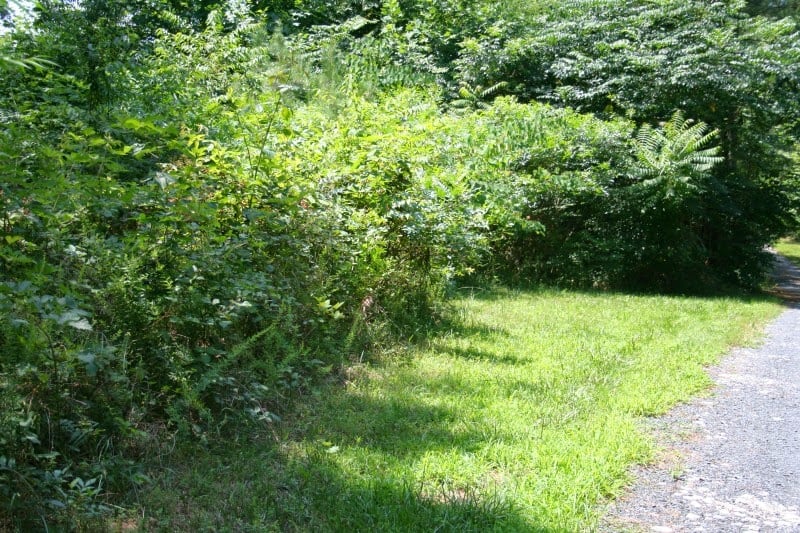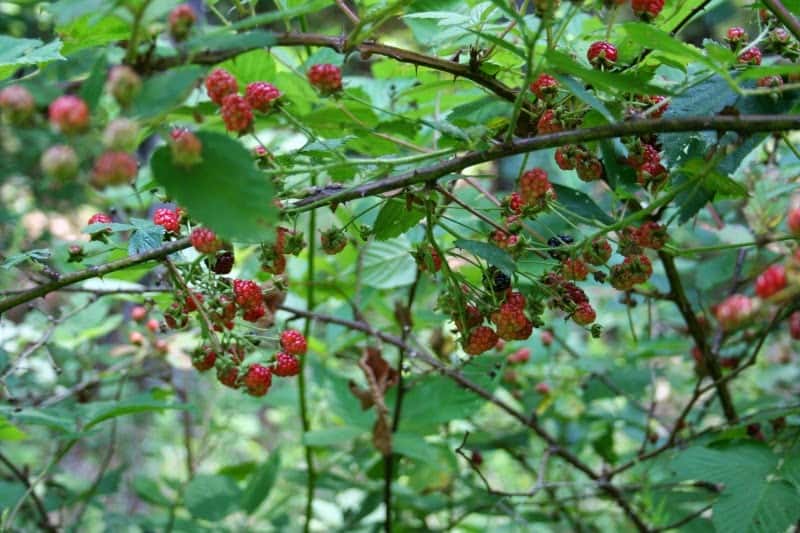Picking wild blackberries is one of the treats of living in a rural area. Deciding what to do with them is a creative challenge this cook is up to!
But the blackberries are a curse when they invade the garden – which is always. They have to be the most opportunistic, sharp-thorned, impossible to get rid of plants God ever made. I’m forever pulling blackberry vines from the garden beds. They send out long runners underground and produce a single stem. At first, the stem looks like an innocuous, almost pretty little weeds. If you grasp it with bare hands, however, you’ll be sorry. Large, sharp thorns are interspersed with thorny fuzz along the stems that leaves small, itchy welts. At least they itch on my hands.
 |
| Doesn’t look like much, does it? These are the blackberry bushes along our driveway. They are loaded with fruit. |
 |
| On closer inspection, you can see the berries on the bushes. These are unripe. |
 |
| The ripe berries are dark, dull purple, and mixed with the unripe. Watch the thorns. Ouch! |
 |
| Wild blackberries. |
 |
| It’s not gardening unless I’m accompanied by a cat. Whitey came to the blackberry patch to help. |







Those look delicious!
Haven’t picked blackberries in years, they used to grow along lots of hedgerows in Britain. I didn’t collect them but ate them on the go. Greedy I know.